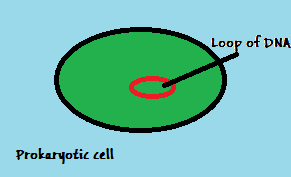The Cell structure
By Naomi Keddy
The Microscope:
-Coarse focus: For Approx. focusing.
-Fine Focus: For Precise focusing.
-Eye Piece: Magnifies the image.
-Nosepiece: Rotates to move to desire lens.
-Objective Lens: Magnifies the image.
-Stage: Supports the slide.
-Mirror: To supply light to the slide.
Animal and plant cell structure:
#
Animal cell:
-Protoplasm: Is all the living parts of a cell.
-Cytoplasm: Is all the living material in the cell outside the nucleus.
-Ribosomes: To make protein.
-Cell membrane: To retain the cell contents
-Nucleus: Contains the strand of DNA. The Nucleus is the control of the cell.
-Mitochondrion: Is the sites of respiration.
-Chromatin: Is the name given to chromosomes when they are elongated and dividing.
Mitochondria: Are the sites of respiration and it supplies energy to the cell.
Plant Cell:
-Cell Wall: To support and strengthen the cell.
-Chloroplast: Contain the green pigment that allows plants carry out photosynthesis.
-Vacuoles: contain a fluid called cell sap, this is a solution of salts, sugar and pigments
Chlororplasts: are surrounded by double membranes. They have membranes stacks which contain the green pigment chorophyll. They also have a loop of DNA.
The differences between plant and animal cells:
-Plants have a cell wall and animal do not have a cell wall.
-Plants have a chloroplasts and animal cell do not have chloroplasts.
-Plants have large vacuoles and animal do not have large vacuoles.
The Cell Membrane or Plasma Membrane:
All living membranes have the identical structure. They are composed of phospholipids and proteins. Cell membranes are thin. The phospholipids are arranged in a double layer called the lipid bilayer. The proteins are entirely or partly fixed in the bilayer and are able of movement. Phospholipids have a water loving phosphate group and a water-hating lipid group. The phosphates are on the outer surfaces and the lipids are in the middle.
Functions of membranes:
-Retain the cell contents.
-Recognise molecules that touch them.
-Control what enter or leaves the cell.
-Give support to the cell.
Prokaryotic and Eukaryotic cells:
Prokaryotic cells:
-Are singled cell
-Have a circular loop of DNA
-Have small cells
-Do not have membranes-enclosed organelles such as mitochondrion and chloroplast.
-Include bacteria







No comments:
Post a Comment